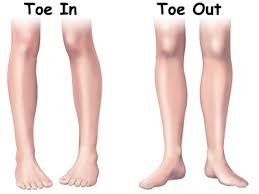Technique in the Irish dance world is the most crucial part of the art form. You can perform a treble or a drum or any other kind of move by doing the movement and making the sound but it will not be any good without technique. Technique is what distinguishes Irish dancers apart and places them in the level of advancement that they are. The better the technique, the better the dancer. As noted in a previous post Body of Ice, Feet of Fire, the rigid posture and strict movement of the feet are what characterize Irish dancers.

Arms
In regards to back posture and how your hands should fall next to your side, remember to tuck in your thumb and hold it slightly past your ribs. Also be mindful to squeeze your elbows close to your side to avoid your arms sticking out or bending.
Turnout
One of the biggest problems young Irish dancers and even some older and more experienced Irish dancers struggle with it turnout. Dancers should not be "pigeon toed" so to speak meaning their toes turn into their body opposed to out. No matter what move you're doing, you should always maintain a turned out position.

Crossed Feet
Another issue that a lot of Irish dancers have regarding their technique is keeping their feet crossed. This can be difficult with certain moves but it is essential to keep your knees tight together to allow for your feet to stay crossed while you dance. This is something you really need to consciously stay mindful of when you are dancing or else it will look sloppy and if you are a competitive Irish dancer you will be deducted points. This video will help you make your feet more flexible to make it easier to stay turned out!
Head Hold
This may seem like an "elementary" tip in Irish dancing but it is also an important one that may be overlooked in comparison to these other techniques. Always hold you're head held high with a smile on your face! This brings confidence whether you are competing or performing. Also by chance you mess up your step or set, this look of confidence saves you from looking frazzled or allowing the audience to think you messed up. It works as a great cover up! Keeping your head held high will also help out your posture in your back. Dance as if there is a pole stuck to your back!
The Pros
All of the best Irish dancers in the world utilize all of these techniques and it is why (along with their dedication) they are the best of the best. World champions are labeled that for a reason and these tips to perfect technique are pat of that reason. As competitors, they know that judges are not only looking for advances steps but also for the perfect technique. A messy complicated step is less impressive than a clean simple step.
In 2016, I competed along with the rest of Fordham's Irish dance team at Villanova with other schools on the east coast. When it came time for the solo treble reel competition, I as a performing Irish dancer was going up against competitive Irish dancers who had made it to worlds and placed. Having never competed I was a little nervous that my step wasn't as complicated as my competitors but that didn't seem to matter as I placed first! Although their steps had more advanced moves in it, my strong technique was enough to win over the judges and I won first place for Fordham.
The purpose of this blog is to inform and educate people on the widespread world of Irish dance while helping fellow and new dancers along the way. Now, I'd like to show you all what every single one of you dancers are capable of with years of practice and discipline. This is Ian Luebbers, who passed away June 11, 2019, in his set dance in Scotland in 2018. I decided to show one of his sets to remember him as one of the best Irish dancers the community had. Rest in peace Ian.
Good luck everyone with practicing technique and as always, happy dancing!


